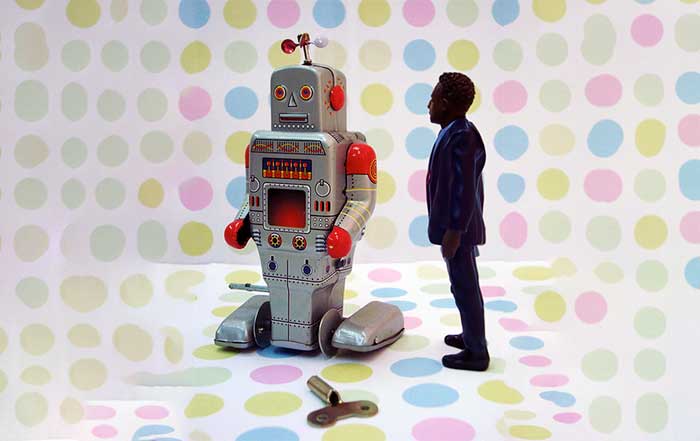When it comes to human-robot interaction, it’s easy to think of a distant future where robots are a normal part of everyday life. But the truth is, the present is here and the future is already in motion. Human-robot interaction has become increasingly prevalent over the last decade, and with rapid advances in artificial intelligence, the future of this technology is sure to be exciting.
At present, robots have become an integral part of the workplace. They can be found in manufacturing and industrial facilities, where they are used for repetitive tasks and to increase efficiency. They are also being used in healthcare, where they are able to assist in medical procedures and provide elderly care. Additionally, robots are being used in retail, hospitality, and other customer service industries. These robots are designed to improve customer experience and increase efficiency.
As the technology continues to advance, robots are becoming more capable of interacting with humans in more complex ways. For example, in healthcare, robots are able to recognize human emotions and even respond appropriately. In the retail industry, robots are being used to provide customers with personalized recommendations and advice. In the hospitality industry, robots are being used to provide customer service, including checking in guests and providing directions.
The future of human-robot interaction will likely be even more impressive. As artificial intelligence continues to develop, robots will become capable of understanding more complex human interactions than ever before. They will be able to recognize facial expressions, recognize user intent, and even engage in conversations with humans. This will allow robots to act as assistants, providing help and advice to people in a variety of situations.
Robots will also be used to help people in their everyday lives. For example, robots will be able to provide reminders and advice to help people stick to healthy routines. They will be able to assist in household chores and provide companionship to those who are elderly or lonely.
In addition to providing assistance in everyday life, robots will also be used for more complex tasks. They will be able to assist in medical procedures and provide help in dangerous and hazardous jobs. They will also be able to assist in scientific and engineering research, allowing people to explore and discover new things.
The possibilities for human-robot interaction are endless. As technology continues to advance, the potential for robots to interact with humans in complex ways will only increase. With this technology, robots will be able to provide valuable assistance in a variety of situations, from helping people in their everyday lives to assisting in dangerous tasks. This will allow people to do more with their time, while also providing companionship and support.

